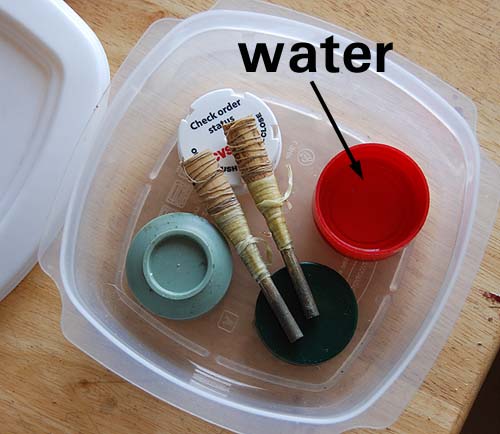 Gouge
the slip but don't finish it. Leave it unsanded, slightly wider than intended
for the reed, with the edges thicker than intended after sanding.
Gouge
the slip but don't finish it. Leave it unsanded, slightly wider than intended
for the reed, with the edges thicker than intended after sanding.Copyright 2010 David C. Daye
 Gouge
the slip but don't finish it. Leave it unsanded, slightly wider than intended
for the reed, with the edges thicker than intended after sanding.
Gouge
the slip but don't finish it. Leave it unsanded, slightly wider than intended
for the reed, with the edges thicker than intended after sanding.
Give the slip one severe humidity cycle before finishing the slip and making the reed. Wild cane in particular is sometimes under high stress, and the relief cycle may leave a slip at a noticeably different curvature than when first gouged. It's best not to have the edges thinned all the way to final thickness because the treatment could cause distortion.
A high humidity box can be used as shown at right for forced settling of newly built reeds. Leave the slip sealed in the box for a day or overnight, then leave it in the driest air possible for a full 24 hours. In cold weather it can be rested near a heating vent. You can use a set of draftsman's hole templates to find the bark diameter before and after the treatment. If there is much change, a different sanding cylinder size will need to be used for finishing, but the settling and elevation of the reed built from the slip will be more predictable than it would otherwise have been.